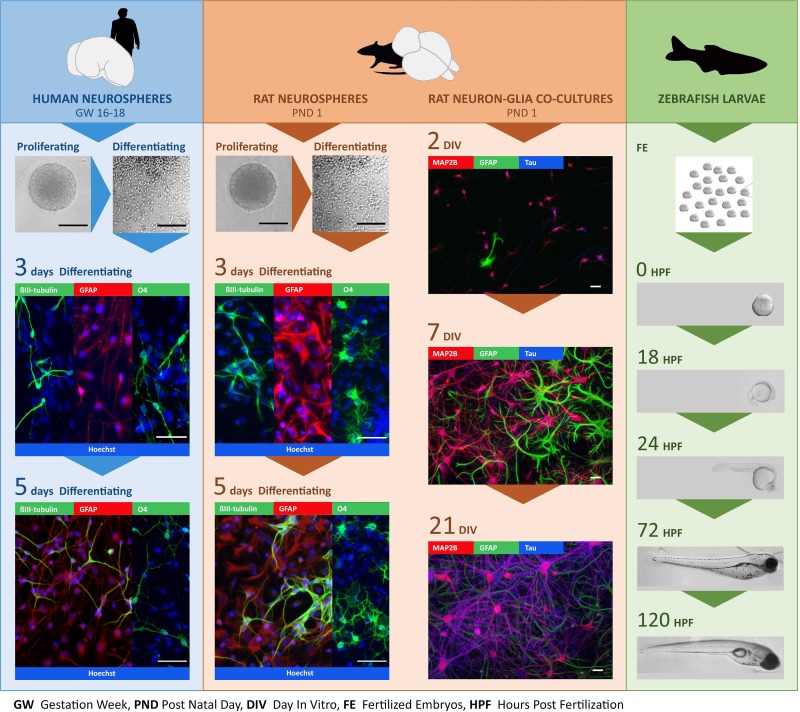Fig 2
Human and rat neurospheres, primary rat cortical cell cultures and zebrafish larvae were used to study the expression of TH signaling components and TH-responsive genes at multiple developmental stages. In human and rat neurospheres, gene expression was evaluated in proliferating neurospheres and at days 3 and 5 of differentiation; in rat neuron-glia co-cultures at day

